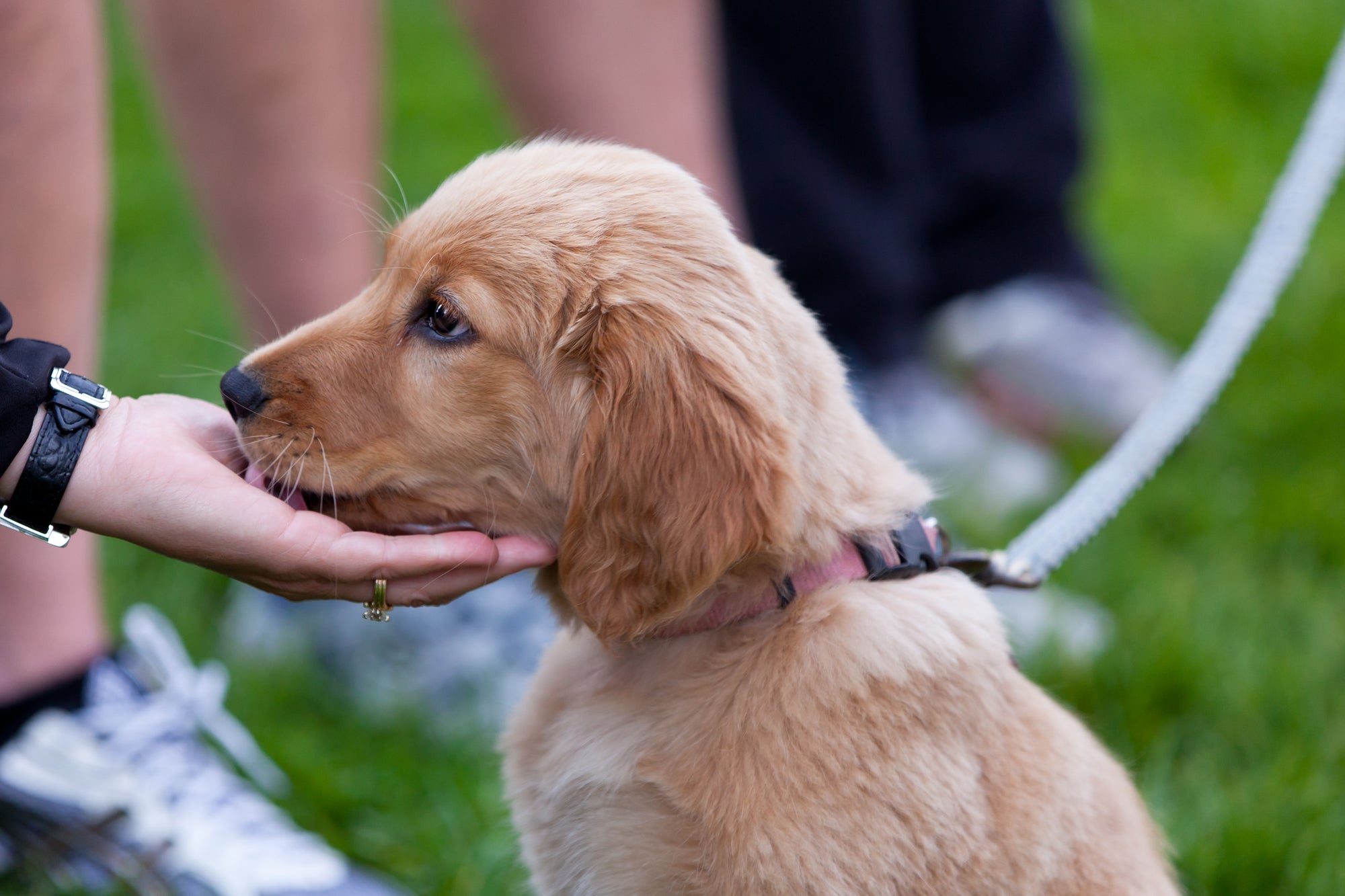Lead training is one of the most interesting and most frustrating times as a dog owner. Your puppy will want to run a hundred miles an hour to explore as much as possible in as short a time as possible. You, on the other hand, want an orderly walk with your puppy walking calmly on the lead.
As you can imagine, getting these two different approaches to work together is a challenge, but one every puppy owner has to go through.
Why lead training is important for puppies
Lead training is a rite of passage, both for new dog owners and for puppies. It helps create a bond between you and your new companion and gets them used to the hierarchy.
Hierarchy is vital with dogs as they are pack animals. They need a clear leader, which is going to be your job for the foreseeable future.
Plus, it teaches them to walk calmly, at your pace, which is going to be essential for every walk you take.
The last thing you want is a puppy, and then a fully grown dog dragging you along the street!
Persuasion and motivation
The key to dog training is finding out what motivates them and using that as incentive to do what you want.
Some dogs are more motivated by treats and food than others, yes really! Other puppies will respond more to praise or a fuss.
As you spend more time with your new puppy, you’ll soon figure out what motivates it most. That’s the tool you use in all training.
You’ll need a good dog lead, treats and a willingness to give lots of praise to train your puppy.
Lead training for puppies
Lead training starts from the moment you get your new puppy. You begin by fitting a collar and getting them used to it.
A collar and tag are a legal requirement when out in public, so the earlier you do this, the better.
They are also an essential part of lead training as the lead will attach to the collar. If they are already used to wearing a collar, that’s one less thing to worry about when it comes time to lead train them.
Here are some of the steps we recommend taking when lead training a puppy:
Introduce your puppy to the lead
You want your puppy to view their new lead positively, so begin by introducing them to the lead.
Don’t attach it to them yet, show it to them and make it fun. Show them the lead and give them a treat or their incentive of choice.
Play a game with the lead and reinforce that the lead is a good thing.
Walk your puppy around the garden on the lead
Next, attach the lead and walk your puppy around the garden if you have the space. Make it fun, use an excited voice (but not too excited as it will get them excited) give plenty of praise and treats.
The idea is to get them used to being limited by a lead in a positive way. The end result is that you want your puppy to view the lead as a good thing.
Play games with them on the lead, get them to chase you around the garden or whatever you like.
It’s less about getting them to walk and more about associating the lead with the good times.
Take your puppy for a walk
Once your puppy is fully vaccinated and used to the lead, take them for a walk.
There will be lots of new sights, sounds and smells so don’t worry too much about walking to heel to begin with. The occasional prompt and gentle pull back to get them in line is fine, but try to retain the fun factor.
If your puppy is scared by something, be reassuring and act as though nothing has happened. After a while, they will get the message and know they don’t have to be afraid.
Find a park or calm space
Once you have been out a few times with your puppy and they are used to you and the outside world, it’s time for training.
Make sure you have plenty of treats with you as this is going to require a lot of them!
Use a single command word like ‘walk’, ‘heel’ and ‘stop’. Choose whatever words you like, but make sure they sound different and that you always use the same word.
Associate the word with an action, say ‘walk’ and then begin walking. Say ‘stop’ and stop walking.
Say ‘heel’ and pull gently back on the lead so your puppy walks beside you.
The key here is consistency and repetition. Even the most excited puppy will soon get the message and begin taking on board your training.
When they get it right, smile at them, say something positive and give them a treat. Make all messages of approval clear, even if you have to over exaggerate a little.
When they don’t get it right, don’t tell your puppy off.
If they pull when on the lead, stop. Wait until they stop pulling and begin walking again. Rinse and repeat until they get the message.
Patience is everything
Lead training a puppy is great fun and helps create a bond between you and your new faithful friend. It takes patience, but everything worthwhile in life does.
When that everything is a cute puppy who will become a lifelong companion, a little patience is the least they deserve don’t you think?

